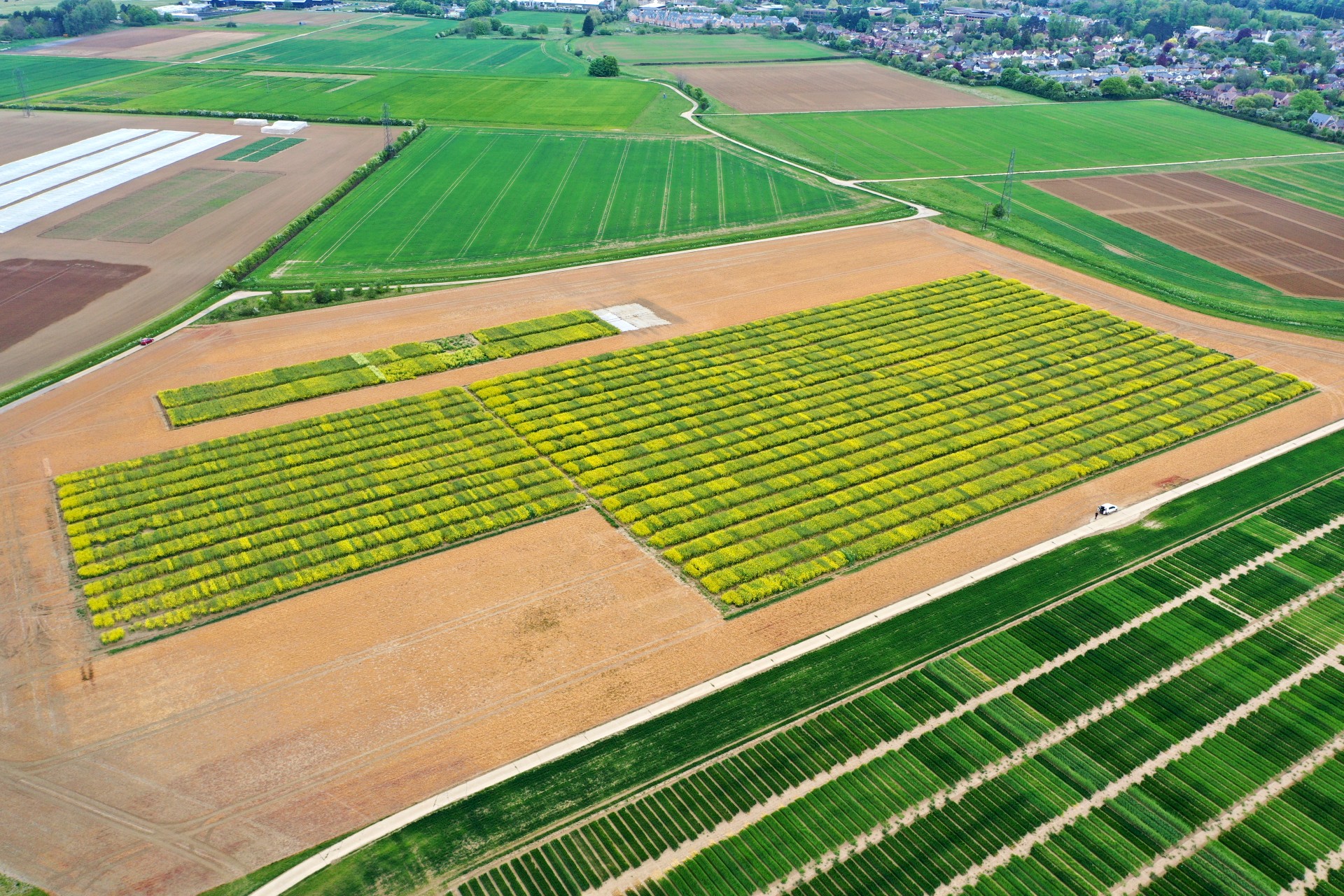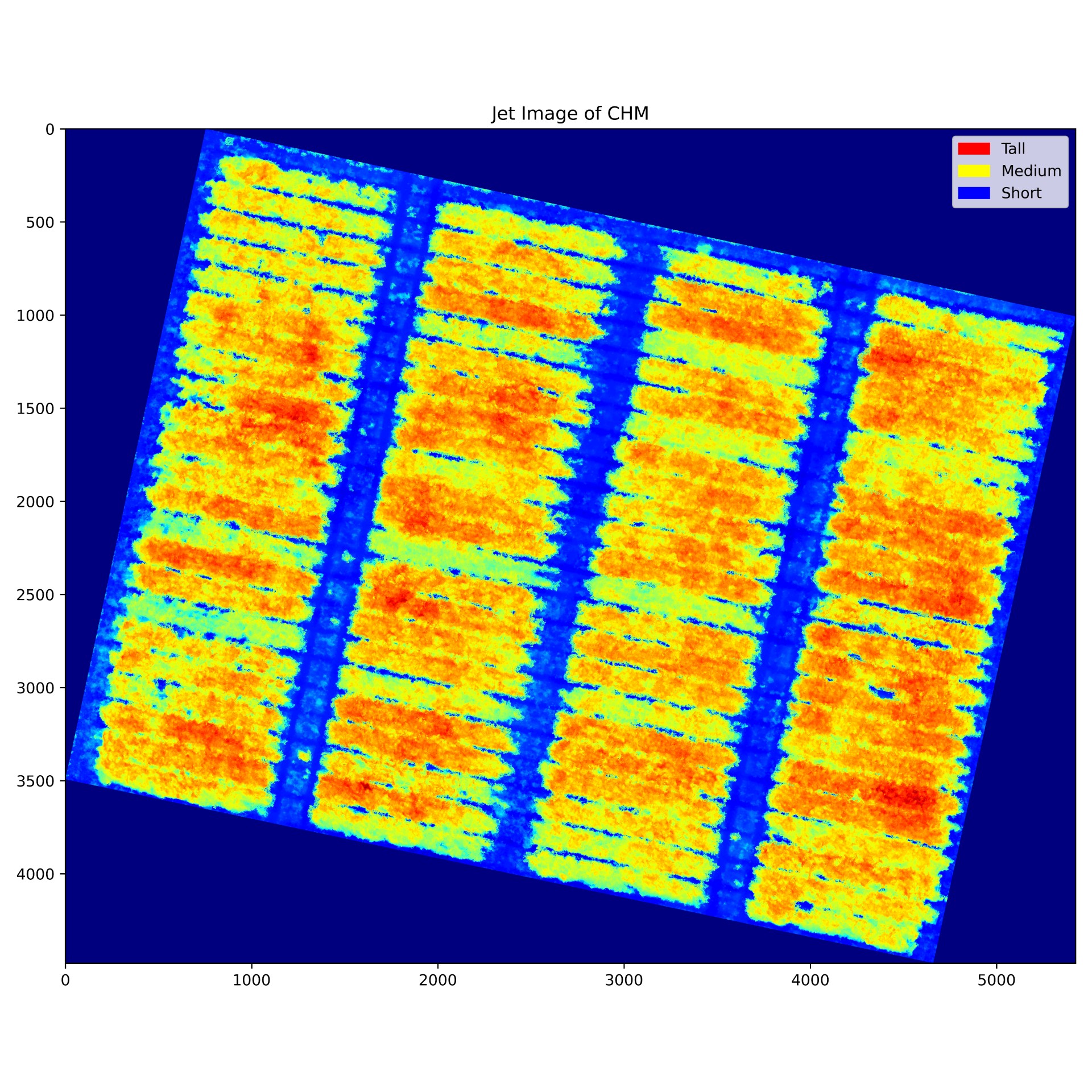- About
-
Research
- Agronomy and farming systems
-
Agricultural crop research
-
Research projects - agriculture
- About SASSA-SAI
- BioBoost
- Biomass Connect
- CTP for Sustainable Agricultural Innovation
- Climate Ready Beans - workshop presentations (March 2022)
- Crop diversity HPC cluster
- Designing Future Wheat
- Final project workshop
- Get involved
- List of materials
- News and updates
- Partners
- Rustwatch
- The Sentinel Crop Disease Surveillance Network
- The research team
- UK Cereal Pathogen Virulence Survey
- UK wheat varieties pedigree
- Weed management - IWM Praise
- Crop breeding
- Crop characterisation
- Data sciences
- Genetics and pre-breeding
- Plant biotechnology
- Plant pathology and entomology
- Resources
-
Research projects - agriculture
-
Horticultural crop research
-
Research projects - horticulture
- Augmented Berry Vision
- BEESPOKE
- Boosting brassica nutrition in smart growing systems
- CTP for Fruit Crop Research
- Develop user-friendly nutrient demand models
- Egg laying deterrents for spotted wing drosophila
- Enhancing the nutritional quality of tomatoes
- Improving berry harvest forecasts and productivity
- Improving vineyard soil health through groundcover management
- Intelligent growing systems
- Knowledge transfer for sustainable water use
- POME: Precision Orchard Management for Environment
- RASCAL
- STOP-SPOT
- UV-Robot
- Crop science and production systems
- Genetics, genomics and breeding
- Pest and pathogen ecology
- Field vegetables and salad crops
- Plum Demonstration Centre
- The WET Centre
- Viticulture and Oenology
-
Research projects - horticulture
- Crop Science Centre
- Research Projects
- Research Publications
-
Services
- Analytical Services
- Business Development
- Commercial trial services
- Membership
- Plant breeding
- Plant characterisation
- Seed certification
-
Training
-
Technical agronomy training
- Advanced crop management of bulb onions
- Advanced crop management of vegetable brassicas
- Advanced nutrient management for combinable crops
- Benefits of cover crops in arable systems
- Best practice agronomy for cereals and oilseed rape
- Developing a Successful Strategy for Spring Crops
- Disease Management and Control in Cereal Crops
- Incorporating SFI options into your rotation
- Protected Environment Horticulture – Best Practice
- Techniques for better pest management in combinable crops
- Crop inspector and seed certification
- Licensed seed sampling
-
Technical agronomy training
- News & Views
- Events
-
Knowledge Hub
- Alternative and break crops
-
Crop genetics
- POSTER: Diversity enriched wheat (2025)
- POSTER: Genetics of wheat flag leaf size (2024)
- POSTER: Wheat yield stability (2024)
- Poster: Traits for future cereal crops (2022)
- POSTER: wild wheat fragment lines (2022)
- POSTER: Improving phenotyping in crop research (2022)
- PRESENTATION: Plant breeding for regen ag
- Poster: Designing Future Wheat (2020)
- Crop nutrition
-
Crop protection
- POSTER: Understanding the hierarchy of black-grass control (2025)
- POSTER: Emerging weed threats (2025)
- POSTER: Disease control in barley (2025)
- Poster: Weed seed predation in regen-ag (2024)
- POSTER: Disease control in winter wheat (2025)
- POSTER: Mode of action (2023)
- POSTER: Inter-row cultivation for black-grass control (2022)
- POSTER: UKCPVS winter wheat yellow rust in spring 2025 (2025)
- Poster: Management of Italian ryegrass (2021)
- POSTER: UKCPVS winter wheat rusts - 2024/25 review (2025)
- POSTER: UKCPVS disease monitoring and the benefit to UK growers (2025)
- POSTER: Diagnosing and scoring crop disease using AI (2025)
- POSTER: Finding new sources of Septoria resistance (2024)
- POSTER: Fungicide resistance research (2024)
- POSTER: Detecting air-borne pathogens (2024)
- POSTER: Oilseed rape diseases (2024)
- POSTER: Fungicide resistance research (2024)
- POSTER: Improving chocolate spot resistance (2022)
- Poster: Pathogen diagnostics (2022)
- Fruit
- Regen-ag & sustainability
-
Seed certification
- POSTER: Wheat DUS (2024)
- POSTER: Innovation in variety testing (2024)
- POSTER: AI and molecular markers for soft fruit (2024)
- POSTER: Barley crop identification (2023)
- POSTER: Herbage grass crop identification (2023)
- POSTER: Herbage legume crop identification (2024)
- POSTER: Minor cereal crop inspecting (2023)
- POSTER: Pulse crop identification (2023)
- POSTER: Wheat crop identification (2023)
-
Soils and farming systems
- POSTER: Checking soil health - across space and time (2024)
- POSTER: Checking soil health - step by step (2024)
- POSTERS: Changing soil management practices (2022)
- Poster: Monitoring natural enemies & pollinators (2021)
- POSTER: Soil structure and organic matter (2024)
- POSTER: Novel wheat genotypes for regen-ag (2024)
- Video: New Farming Systems project (2021)
- Video: Saxmundham Experimental Site (2021)
- POSTER: Impact of prolonged rainfall on soil structure (2024)
- POSTER: Soil & agronomic monitoring study (2024)
- POSTER: The impact of rotations & cultivations (2024)
- VIDEO: Great Soils; soil sampling guidelines (2020)
- Poster: Soil invertebrates within arable rotations (2024)
- VIDEO: Soil health assessment (2021)
- POSTER: Saxmundham - modern P management learnings
- POSTER: Saxmundham - 125 years of phosphorus management
- Poster: Soil phosphorus - availability, uptake and management (2025)
- POSTER: Morley long term experiments (2025)
- POSTER: Exploiting novel wheat genotypes for regen-ag (2025)
- Video: Saxmundham Experimental Site (2021)
- Varieties
New technology in DUS testing

Dr Margaret Wallace leads a team delivering DUS testing and seed certification at NIAB, here she explains how new technologies are helping us do that.
Distinctness, Uniformity and Stability (DUS) testing is used to award Plant Breeder’s Rights and in the process for Variety Listing. PBR allows breeders to claim royalties on the sale of seed or plant material of a variety.
Variety Listing (formerly National Listing) is required in the UK (and other countries) to legally market some agricultural crops and often involves a separate VCU (Value for Cultivation and Use) test.
The DUS test has been a part of UK agriculture for many years; the UK was one of the founding members of the inter-governmental organisation UPOV, the International Union for the Protection of New Varieties of Plants, which aims to harmonise testing across its member countries.
The royalties claimed by a breeder provide a return on the substantial investment that has gone into the development of that new variety. In the UK, the Variety List is a requirement for seed certification.
The testing process confirms if a new variety is clearly different from all other known varieties based on a characteristic set that should be consistent across growing cycles. Uniformity is a measure of how different the plants look within the variety.
The level of uniformity required is set by the method of production, for example a barley variety, produced by self-pollination, is expected to be more uniform than a cross pollinated oilseed rape variety. Stability is usually inferred by uniformity.
The distinctness criteria require each new variety to be compared with all varieties in common knowledge. This means that the reference collections can be immense – think how many wheat varieties there are in the world.
The test centres use many criteria to rule out varieties that are not similar so that only the most relevant are included in a growing trial. However, for the major agricultural crops, this still means a large number of field plots are needed. Test centres across the globe are investigating new methods to incorporate into systems to allow them to keep up with the high numbers of applications received each year; the UK is no exception.
DNA technologies
DNA profiling cannot entirely replace phenotyping in a DUS test. Two varieties that look different may have the same DNA profile. This means that although they look different, they would be considered the same.
The other issue is the definition of “distinct”. How different would a profile need to be if it were to be considered clearly distinct and would the difference need to be in a region of the genome that is coding, ie would it need to be linked to a trait?
If the difference is in an area of the genome that is non-coding, then this could make registering a new variety quite simple without any genetic gain or benefit to the end user. So, a totally DNA-based DUS test is not appropriate (yet…we do not know what the future holds) but the use of genetic information is becoming more prevalent in current DUS systems.
There are two internationally recognised methods for the use of marker information during a DUS examination. The first replaces the traditional assessment of a characteristic with a marker. This assumes a reliable link between the marker and the trait and is most efficient where a separate test or trial is required to observe the characteristic.
The other method is using genetic data to screen the large variety lists (reference collections) to identify the most similar varieties, which are then grown in the trial.

Winter oilseed rape DUS trials at NIAB Park Farm on the outskirts of Cambridge
This along with the many other types of screening, e.g. comparison of data or variety descriptions, review of photographs, expert opinion (known as walking reference collection), can be very effective in reducing trial size and allow better trial design, potentially resulting in faster, cheaper DUS tests.
The national authorities of the UK are committed to exploring the use of molecular markers in DUS testing systems. NIAB is conducting two studies with the potential to implement molecular markers in DUS testing funded by Defra.
The first, and larger of the two, is screening a significant portion of the barley reference collection. This study will initially explore the marker information to establish the relationship between the varieties (genetic distances) but will also identify any new trait-specific markers.
The work builds on previous studies in barley genetics and will potentially go some way to resolve a growing issue, particularly with spring barley, where genetic gains are not showing clearly in the phenotype of the varieties. The goal is to identify very similar varieties earlier in the testing process to give more opportunity for assessment without elongating the testing period or dramatically increasing the costs.
Spring barley is an important crop in the UK, not just for the whisky drinkers, so it is important that the testing system is relevant and effective.
The second project again builds on NIAB’s expertise, this time in soft fruit genetics, specifically raspberries. Although smaller in funds, the ambition of the project is no less bold. The first task is to develop a set of markers that are robust, reliable and will be somewhat future-proof.
Exome capture sequencing and whole genome sequencing will be used to produce the data and give a view of the best method for future implementation. The data will then be analysed using similar strategies as the barley project with the addition of data augmentation and machine learning.
There are two EU Horizon-2020 projects heading towards their final year, both focused on improving varietal testing (DUS and VCU). NIAB is working within the INVITE project to develop a set of markers to assist in the selection of most similar varieties from the wheat reference collection.
As with the barley project, the aim is to be able to screen the collection earlier in the process and grow a smaller set of varieties in the trials. NIAB will also work with Biomathematics and Statistics Scotland (BioSS) to assess new ideas for using genetic data to reduce trial sizes further. The molecular work is one of eight work packages and wheat is one of ten crops within the project.
The UK is also involved in the InnoVar Project, which is being co-ordinated by the Agri-Food and Biosciences Institute (AFBI).
This consortium has focused primarily on wheat and the project also has a strong emphasis on the use of genetic information. To suit the out-crossing nature of oilseed rape, the DUS test is based on large amounts of measured data.
The collection of approximately two million data points is intense, with the majority being collected between flowering and pod development. NIAB, funded by the EU’s Community Plant Variety Office (CPVO) and the UK’s Animal and Plant Health Agency (APHA), were involved in a project with the French company BioGeves to scope the use of markers in oilseed rape DUS testing.
The end goal is to find a marker set and a process that could effectively screen the reference collection to reduce the number of varieties grown each year. The initial project showed that bulking seeds before extracting DNA was a useful method and identified some markers. The second project (NIAB was an observer partner due to Brexit) consolidated the marker set and genotyped a larger subset of the reference collection.
The potential third project will be to establish a method of implementation. One of the main issues to overcome is the timing of data. The time between the closing date for applications and drilling the plots is very short. The majority of the planning and preparation is carried out before the applications have arrived.
NIAB also conducted a short study of the genetic distances within the field bean reference collection. The marker set had been developed during other research work, so it was relatively simple to conduct the study which had some good outcomes. A proposal for further work will be submitted soon.
Drone imaging

Using drone imaging in assessing height in DUS trials
Unmanned Aerial Vehicles (UAV) are everywhere these days, with varying degrees of acceptance. Rules surrounding where and when they can be flown can reduce their use in trial work. Weather conditions also dictate flights or effectiveness in image collection. However, in collaboration with NIAB’s data sciences team, the DUS examiners have been imaging trials for four growing seasons and are achieving a good correlation with the measurements taken by hand.
The focus has been on height measurements as it is likely to be the most beneficial. To be able to use images collected by UAV and calculate the height of a plant would significantly reduce staff time and cost even though it is only one characteristic.
Once the technique is honed to ensure consistent results, a review of the test protocols is likely to be required. Currently, in the crops tested at NIAB, the protocols require plant length to be observed.
This involves straightening the plant and any branches to take account of the full length of the plant. The images are capturing plant height – the top of the natural canopy or the highest point before the plant droops. There is still work to be done before implementation, but the technique is promising.
The INVITE and InnoVar projects both have an element of image capture and data analysis. The InnoVar work has been using UAVs and results are similar to the findings coming from NIAB. The two studies have been established independently, which shows that the results are not dependent on any one system, which should make the technology more palatable to policymakers.
The INVITE project has focussed initially on stand-mounted or hand-held imaging with mobile phone cameras, using tomatoes as the test subject. Early versions of the software had some user platform issues. An update has recently been circulated between the partners, so when we have finished our normal autumn work, we will be off to the farmers market to try it out.
Developments in the existing elements
It is not all about new technologies. The DUS test centres are always reviewing the usefulness of the phenotypic characteristics listed in the protocols, considering new characteristics or analysis techniques. Recently, the Plant Varieties and Seeds (PVSC) and National Lists and Seeds Committees (NLSC), which make decisions on PBR and Variety Listing, have approved the introduction of pro-anthocyanidin as a special test in the barley protocol and other new phenotypic characters are on the agenda for discussion.
The UK’s Inter-Departmental Statisticians Group (IDSG) has been reviewing the Combined Over Years Uniformity, or COYU, analysis. The final investigations before implementation of the COYU-Splines method in the UK are underway. This is not intended to change the uniformity criteria, but instead introduce a more effective calculation method.
The methods used for statistical analysis are also being considered in the INVITE project. BioSS and NIAB statisticians are playing an important role in linking the academic research with the practical DUS testing methods. Their expertise in UPOV principles is key to the success of the studies for future implementation.
The research groups are very active in exploring potential developments in DUS testing, using expertise across a range of subjects. However, if you think we are missing something or have suggestions for what else to investigate, please contact the DUS team.
This article originally appeared in the Autumn 2023 edition of NIAB’s Landmark magazine. Landmark features in-depth technical articles on all aspects of NIAB crop research, comment and advice. You can sign up for free and get Landmark delivered to your door or inbox:





